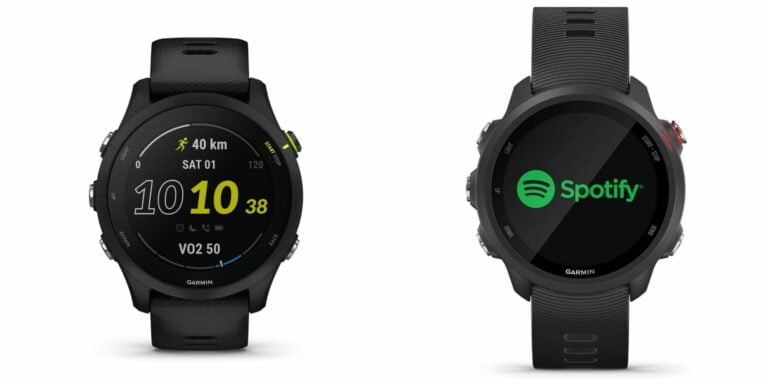Any links to online stores should be assumed to be affiliates. The company or PR agency provides all or most review samples. They have no control over my content, and I provide my honest opinion.
Just before Christmas, I was contacted by Volt to review one of their e-bikes, the Volt Connect and I have been using it intermittently for the past couple of weeks.
I am a reasonably keen cyclist that rides a road bike, and as an ex-obese person, one of the main reasons why I cycle is for fitness and to keep the weight off. So I have to admit the concept of an electronic bike is very strange to me, it goes against the exact reason why I got into cycling in the first place. However, I was open to having my mind changed. I will make a lot of comparisons to my road bike, which I know is comparing apples to oranges, and it is a little unfair, but it is the only comparison I have, and I suspect buyers would also carry out similar comparisons.
The Volt Connect is one of the top models offered by Volt and is a hybrid touring style geometry with mudguards and panniers. I requested this style as I do actually commute to an office a few times a month which is about 20 miles there and back, and I could see some use in the idea of an e-bike for everyday work commuting. The idea of an electric mountain bike is even more confusing for me!
The Volt Connect weighs in at 18.5KG which makes it one of the lighter models Volt has, though they all seem to range from 18.5KG to 20.5KG. Looking at competing brands such as Raleigh, Freego and HaiBike this is actually on the lighter end of the market, with some of these bikes weighing up to 28KG! In comparison, my not very fancy Felt F95 weighs around 10KG.
The Connect is powered by a Li-Pol 36v Sony battery and should give you a range of about 70 miles, dependent one what setting you have it on.
The frame is 20.2 inches and it uses the Shimano STEPS motor which apparently is the most advanced crank driven electric motor on the market today. This system reads information about how you are riding and delivers power appropriately in real-time, resulting in a ride that feels completely natural. The motor will read information such as the torque exerted on the cranks when the user pedals, the gradient and speed. It will then calculate how much power the motor should produce to supplement the rider’s pedalling.
The brakes and gears also use Shimano, with the brakes being Alfine hydraulics and gears being Deore 9 speed gears
The wheels are 26 Inches x 1.75 and the front fork is SR Suntour NCX, which is a suspension fork that can be locked into place.
My initial impression was that it is a massive bike. It is significantly larger all round than my little Felt and it looked like it would be too large for me. I was not fond of the suspension forks either, as a commuter bike I don’t see the point of them, but at least they can be locked out.
When I first looked at the weight difference between my bike and the Volt I didn’t think 10KG would feel like that much, but lifting the bike up shows just how much more it weighs. Combined with the size getting it into and out of my house is a little annoying. I am glad I don’t live in an upstairs flat.
Once I adjusted the bike, I was able to sit on it comfortably, it still felt huge, though, like I was in an SUV compared to a hatchback.
During my time with the bike I went on a few short runs to town and the gym, but I did 2 longer runs one about 25 miles in reasonably nice weather on mostly flat terrain, and the second was my commuting day for 20 miles total with relatively small low incline hills but with a return journey facing 40+MPH winds.
The initial feel compared to my Felt is strange, it is such a large bike in comparison, but once you get going it is quite a pleasant ride. The seat post has suspension built into it, combined with the big tires, most of the bumps and rough patches on the road were absorbed comfortably.
The seating position is quite vertical too, which I actually quite liked. Unfortunately working behind a PC all day and spending years being unhealthy mean my lower bike fatigues very quickly on a road bike.
Gear changes are very smooth and easy, and on flat terrain without the motor on the bike actually feels quite fast. I don’t cycle for speed so much on my normal bike, and I was able to maintain a speed of 15-16mph on the Volt with no assistance, which is around the same as I normally cycle. I didn’t feel like I was putting any additional effort into it, even though the bike is heavier and less aerodynamic.
This obviously does change when you hit hills, and you can really start to feel the weight in your legs.
Thankfully, this is obviously where the batter comes in. You manage it with your left hand, not dissimilar to gears, and can set it to off, eco, normal and high. It doesn’t apply power permanently, but just assists you based on the conditions. Apparently how it assists you is based on torque, gradient and speed. The only thing I noticed was how it would switch off completely when the speedometer hit 16.2MPH. However, I think the speedometer isn’t very accurate as my GPS nearly always read 1-2MPH less, so in fact, it switches off at around 14-15MPH, so for someone of decent fitness, in OK weather, and flat terrain, you quite likely will hardly need the battery.
This fact was evident for most of my bike rides. My first long one I came home with 96% battery, and that only went down because it started to rain on the way home and I just couldn’t be bothered anymore so switched to high. On the cycle to the office, with the wind on my back, it dropped 1%. The battery is still quite useful for standing starts, though, so you will definitely notice the difference if you hit traffic lights a lot.
The day I tested it for my commute was very bad weather, warnings were out with the Met office and I was looking at 40MPH winds with gusts of over 50MPH. Normally I would have just chosen to catch the train, but I figured this would be a good option to test the bike for real. On the way out the wind was right behind my back, and I flew to work using barely any battery, apart from starts and stops.
The return journey was quite a different experience, the wind was the exact opposite direction I was travelling. I was tired from work and hungry so I just wanted to get home, so I immediately whacked it up to high. All I can say is thank god, I had the Volt bike, it was not a pleasant ride home and the bike had to kick in a lot, I was being a bit lazy though I admit. I think if I was on my normal bike I would have genuinely struggled to make it home without at least getting off for a break. The Volt made the journey home quite easy, even though it was still unpleasant. Even on high I still felt like I was cycling a lot, but when I was hitting any form of incline against gusts I could really tell how much it was helping me.
The end result, after 10 miles, I had burned through a 1/3rd of the battery, which is a lot considering how little I used it previously. In terms of the batteries performance, though, that does sound good to me, a 30ish mile range on high usage in poor conditions, that should mean any commuter can get comfortably to and from work on the bike without needing to charge it.
Overall, I still have very mixed feelings towards this bike. For the average user, in my personal opinion, I don’t see the point. The bike costs £2299.00, for less than half that price you could pick up the BMC Alpenchallenge AC01 Sora hybrid, or go for a more touring style bike with panniers such as the Cannondale Touring 2 or for a road bike at just about half price you could get the popular Planet X XLS Shimano Ultegra.
All of these will be about half the weight, offer better day to day performance in normal conditions and be cheaper to maintain (I assume).
However, as stated near the start of this review. These are not really fair comparisons, I wouldn’t compare a Range Rover to a Ford Focus even though they are both cars.
For me, the Volt Connect really shines if you commute literally every day, fitness comes as a secondary bonus, you just want to get to work as quick as possible without all the various costs of running a car. The Volt does this, and it does this well, I think I would quite happily use it in London or Manchester to avoid having to use public transport, and with the included pannier rack you should be able to carry more than you need for a change of clothes and a day’s work. The price tag doesn’t even seem as bad when you compare it the daily cost of public transport or the cost of running a car. Yes, you could use one of the other bikes for exactly the same purpose, but how often will there be bad gales blowing against you or you just feel tired the morning you set off to work and that 10-mile trip seems impossible.
You can buy the Volt Connect direct from Volt Bikes here
I am James, a UK-based tech enthusiast and the Editor and Owner of Mighty Gadget, which I’ve proudly run since 2007. Passionate about all things technology, my expertise spans from computers and networking to mobile, wearables, and smart home devices.
As a fitness fanatic who loves running and cycling, I also have a keen interest in fitness-related technology, and I take every opportunity to cover this niche on my blog. My diverse interests allow me to bring a unique perspective to tech blogging, merging lifestyle, fitness, and the latest tech trends.
In my academic pursuits, I earned a BSc in Information Systems Design from UCLAN, before advancing my learning with a Master’s Degree in Computing. This advanced study also included Cisco CCNA accreditation, further demonstrating my commitment to understanding and staying ahead of the technology curve.
I’m proud to share that Vuelio has consistently ranked Mighty Gadget as one of the top technology blogs in the UK. With my dedication to technology and drive to share my insights, I aim to continue providing my readers with engaging and informative content.









3.5